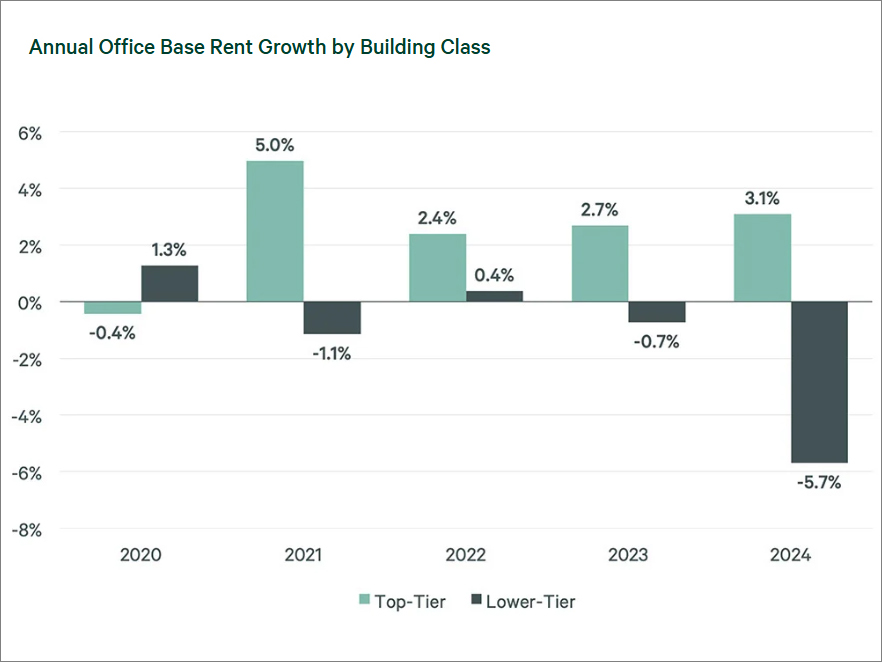What the New Wave of M&As Means for CRE
A fragmented ecosystem and heightened competition are pushing the service industry’s boundaries.
Commercial real estate consolidations and mergers are trending this year. On the owner and investor side, TPG announced the $2.7 billion acquisition of Angelo Gordon. Similarly, Regency Centers will buy Urstadt Biddle in a highly broadcasted $1.4 billion deal. Centerbridge and GIC just wrapped up an $868 million deal to take INDUS private.
However, these types of transactions are extending beyond investors. Brokerage firms have acquired real estate services companies to complement their services, expand their footprint and stay competitive in a tough market.
An early 2023 example was KLNB‘s recent acquisition of Edge Commercial Real Estate, allowing the Mid-Atlantic brokerage firm to expand in size by some 20 percent. In a single step, KLNB expanded its office footprint, increased its CRE tenant representation platform and entered the multifamily market.
A March merger with KLNB’s joint venture partner, the Divaris Group, saw Divaris Real Estate absorbing The McGarey Group. Divaris Real Estate is a real estate platform that, alongside other divisions within The Divaris Group, manages and leases some 37.3 million square feet of commercial real estate. Under its new leadership, The McGarey Group will continue to operate as it had been, performing leasing and advisory services for mixed-use retail developments.
“The KLNB joint venture and the acquisition of The McGarey Group are not directly related to each other,” said Tony Divaris, international controller, CFO & executive committee member of Divaris Real Estate. “However, they are both built on strong industry relationships, and finding the right counterpart and balance to our efforts.” Divaris explained that both strategic partnerships have cohesive working relationships between the owners and company executives. Each deal led to a strengthened business and additional services.
Also following the industry trend, SSH Real Estate acquired Advantage Building & Facilities Services, a property and facilities management company. Advantage, founded in 2005, had been a long-time client of SSH. After looking at several acquisitions of both property management and brokerage companies, SSH chose Advantage as the first company it acquired.
“It was just, really, a perfect fit in terms of having no real duplication (in services) but enabling us to expand on the services we can offer that are already consistent with what we are doing,” said Peter Soens, founding partner of SSH. Key factors in the decision included similar values along with enough existing familiarity between the two companies for a relatively seamless transition.
“It really came down to having more clients and a lot of small contracts that add up and give us a good diversity of revenue and the ability to enter into different companies and businesses that aren’t going to hire us to do a full scope of management,” Soens reported.
Acquiring the right company comes down to a slew of factors. Not only do all of the metrics need to line up but the companies’ values need to align as well.
The similar values that presented themselves across these headliner deals are some of the most critical components in evaluating a deal before it comes to fruition, according to Jonathan Keith, managing director with Risk and Financial Advisory, Deloitte & Touche LLP.
“I think one of the key best practices is in pre-acquisition diligence and identifying and understanding the strategy for doing the acquisition and what benefits you’re trying to achieve,” Keith said. Due diligence of understanding such fundamentals as headcounts, different systems and HR plans is highly important.
“That way you understand the steps you have to take and you can measure the hitting of those milestones and reach synergistic value,” he explained.
Why to make a deal now
After a stretch of rising property valuations and low capital costs, the industry is now facing the fallout of rate hikes and concerns raised by regional bank failures. Stiff competition is leading toward businesses figuring out how to continue operating and find a normal ground.
“When you look at the brokerage space there is a trend toward consolidation of a very fragmented ecosystem,” said Tim Bodner, global real estate deals leader with PwC. That consolidation is being driven by a couple of factors, the most important of which is the scale of the firm and its product offerings.
“Many of these businesses’ customers like to go to one provider,” Bodner added. “If you are not able to offer the full ecosystem of services it is really hard to compete, in particular on the brokerage side of these businesses, which is a transactional business with lower margins.”
READ ALSO: Property Management’s Role in the Development of New Office Spaces
The second goal Bodner believes is driving consolidations is diversity of product mix and scope, followed by filling geographic gaps. “Every business is trying to figure out what their new normal is going to look like coming out of the pandemic and how they are going to operate a new business model,” Bodner noted.
“During times of uncertainty, we tend to be very bullish, so with the current economic climate as it is we feel it is a great opportunity for expansion and solidifying our footprint in the markets we have a presence in,” Divaris added, on his reasoning for making an acquisition in this climate.
On the acquired companies’ side of things, businesses who hired aggressively during an upturn of the market throughout the past several years without significant capital are now struggling to survive, explained Claudine Cohen, managing principal, value360 at CohnReznick.
“The industry is highly fragmented, which lends itself to consolidation and the ability to obtain synergies and efficiencies through back-office functions, sales and marketing,” and other functions, she said. As weaker entrants leave the market, more opportunities for mergers, acquisitions and consolidations arise.
For those that have the capital for corporate-level deals, Keith believes that acquisitions can bring multiple value, such as picking up complementary services, creating more cash flow and adding value. The potential to scale up is attractive, as well.
“With greater scale there is the potential to leverage your fixed base cost by adding existing services to a business…” he said. “If you have a healthy portfolio of clients but you want to do additional services for those clients, buying a business that’s outside of your current competency to complement that can sometimes be easy to pull in and sell to existing customers, and vice versa, to sell to the customer base from potentially a different service line.”
Why now may not be the right time
On the contrary side, today’s economic conditions present sound reasons that this is not the right time to go through with a merger or large-scale acquisition. Leading the list are an expectations gap between buyer and seller and the difficulty of accessing the right capital.
“Putting those two factors together, I think, make it a challenging time,” Keith said. “That’s not to say there aren’t opportunities to do [M&A deals] depending upon the entity you’re looking at, where it’s positioned, the quality of the assets it’s servicing, the quality of the service, how sticky it is, etc. But in my view, those are two major headwinds to getting a deal.”
Nathan Florio, an advisory principal at Deloitte Transactions and Business Analytics, concurred that the capital markets challenges make it a difficult time to move forward. “It’s definitely a harder atmosphere to underwrite a deal,” Florio told CPE.
For SSH’s acquisition of Advantage Building & Facilities Services, the timing was favorable. “We were fortunate to secure our terms before rates really escalated,” Soens said.
However, Bodner believes most of the pressure to be felt in the capital markets climate is in regard to larger transactions. “The smaller deals that are fulfilling a specific niche will continue to get done,” he said.
Finding the right financing
While securing finance for corporate-level acquisitions is increasingly challenging, it is possible. “It’s going to be hard because the valuation is affected by interest rates,” Soens noted. “It is just about being creative in how the transactions get done because the financing markets are so challenging.”
Funding these deals can come from several sources. “Relationship banks are still out there to finance these types of deals, but real estate has gotten a lot more challenging to finance,” observed Soens.
However, Bodner believes that who real estate companies find for their relationship bank is changing. “Increasingly in the real estate ecosystem there has been a complete evolution in private debt capital, where a lot of the nontraditional players are starting to become the relationship banks of the future.”
For smaller acquisitions, of $15 million to $20 million EBITDA, Cohen told CPE that there is still debt available, although it is more expensive and clients are structuring transactions differently.
“Alternative structures may involve earnouts and seller notes,” she said. “There is significant capital through private debt funds and other alternative debt providers.” Senior lenders in many regional markets are still active, as are the larger banks, although leverage multiples have come down.”
Beyond nontraditional banking players and for larger transactions, most deals will happen via liquidity or equity trades.
“These businesses, particularly the larger ones, have a tremendous amount of liquidity,” Bodner added. “Large brokerages have the balance sheet capacity to play offense and make big deal acquisitions.”
Where the balance sheets, cash and liquidity don’t cut it, equity will still do the job. “Financing these deals is generally performed utilizing equity with little to no debt,” Divaris noted. “In most cases we have seen earnouts as the channel used in the acquisition process so as to ensure the transition of value from the acquiree to the acquirer.”
Upon stabilization of interest rates, more traditional lending opportunities would presumably start re-emerging. However, for the time being, finding the right financing requires creativity.
“(The means to finding funding for these transactions) is changing rapidly and changing almost daily as the news comes out,” Florio said.
Continued momentum
While some service firms have no choice but to enter merger and acquisition deals, others are holding off and waiting until more ideal conditions present themselves. However, there are some general trends as to what types of companies are likely to acquire or be acquired.
“I believe brokerage and service entities will perform the most mergers, joint ventures and acquisitions with like-minded talent wanting to do more in their particular market or expanding into other markets,” Divaris predicted. “The opportunity to leverage the strengths of individual brokerage and service entities enhances the chances of success and will appeal to more companies that might have previously been competitors.”
Scaled brokerages are likely to be interested in companies with recurring and resilient revenue streams. Therefore, Bodner expects property management, facilities management and valuation companies to be the most prominent targets for acquisition.
“In terms of the businesses that will think will most often be the acquirers, it is going to be the scaled participants in a lot of cases,” said Bodner.
Cohen believes that along with a strengthening of services, it is a fragmented industry that will lend toward more deals of this nature.
“I think the trend for consolidation will continue due to industry fragmentation and the abilities to obtain economies of scale as the market recovers,” she said.
The deals market surrounding acquisitions, mergers and consolidations of this nature is not always episodic or linear. While many companies are currently undergoing these types of transactions to remain competitive amid economic uncertainty, the main question may be: Do we think the real estate brokerage space is going to continue to consolidate? Bodner says yes.
“There is not enough differentiation and scale in some of these businesses to compete in the environment we are moving into,” Bodner stated. “Businesses that don’t have scale in terms of size, talent, product mix can either sell or close up shop. They are going to be forced to.”








You must be logged in to post a comment.